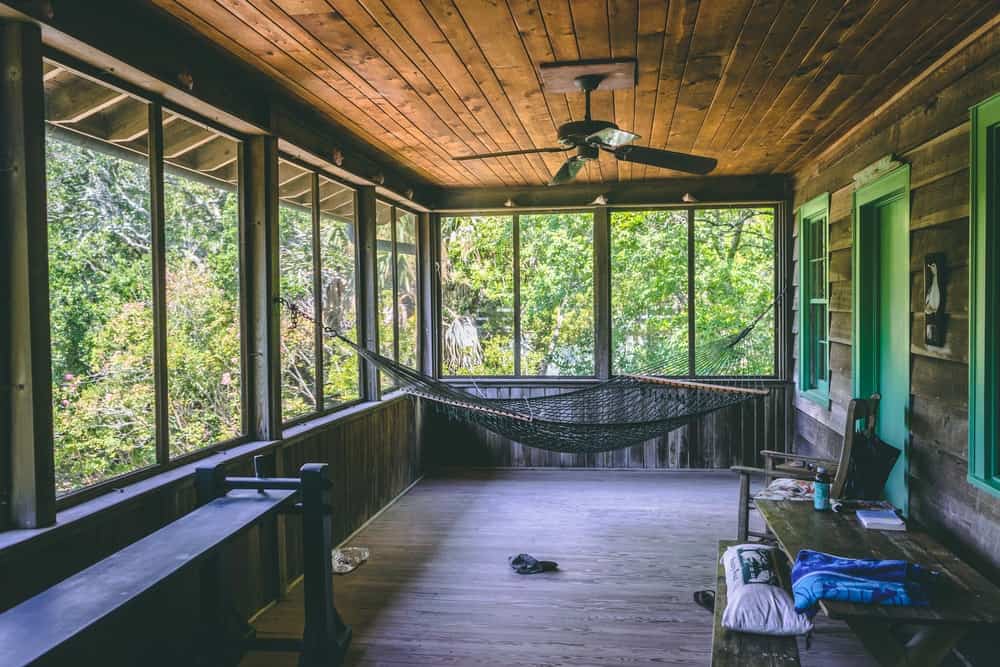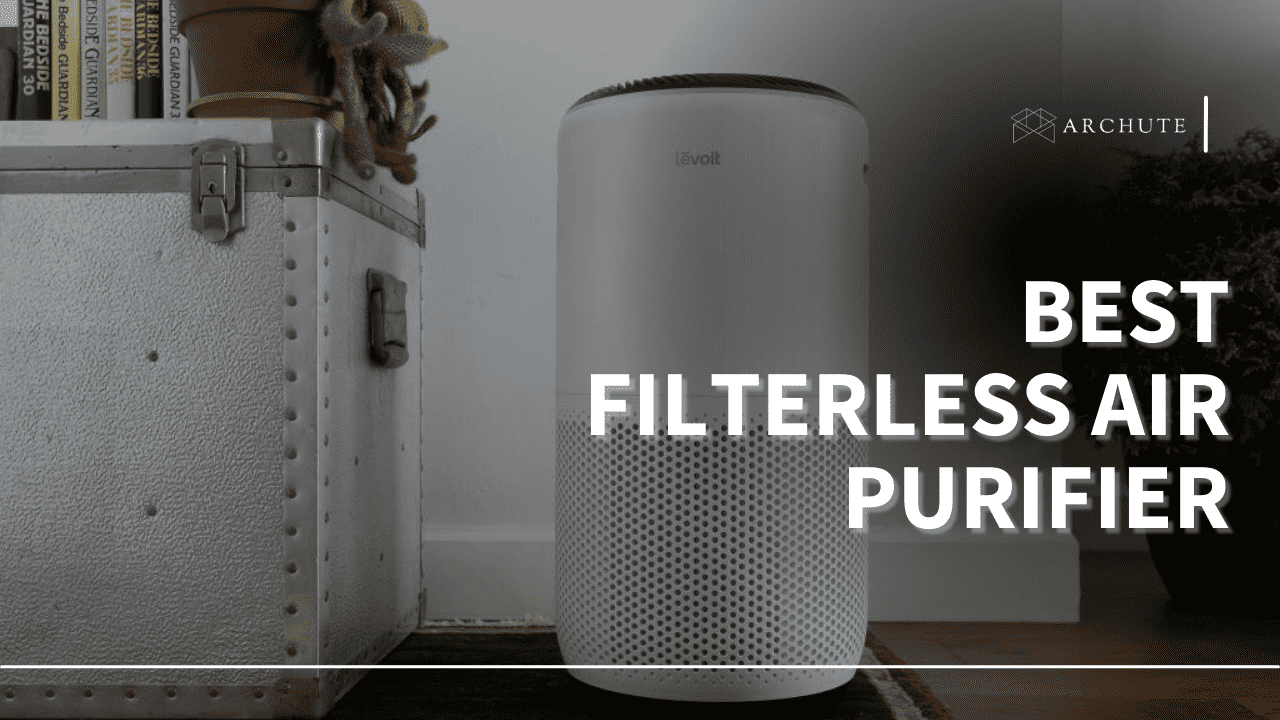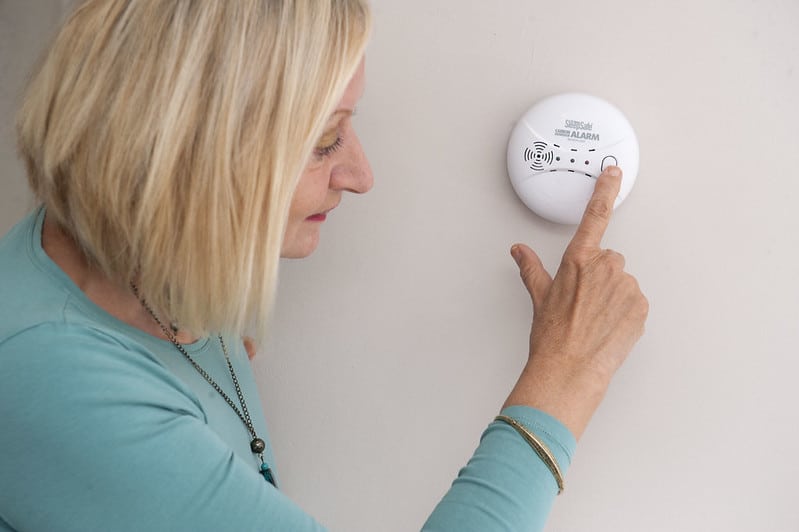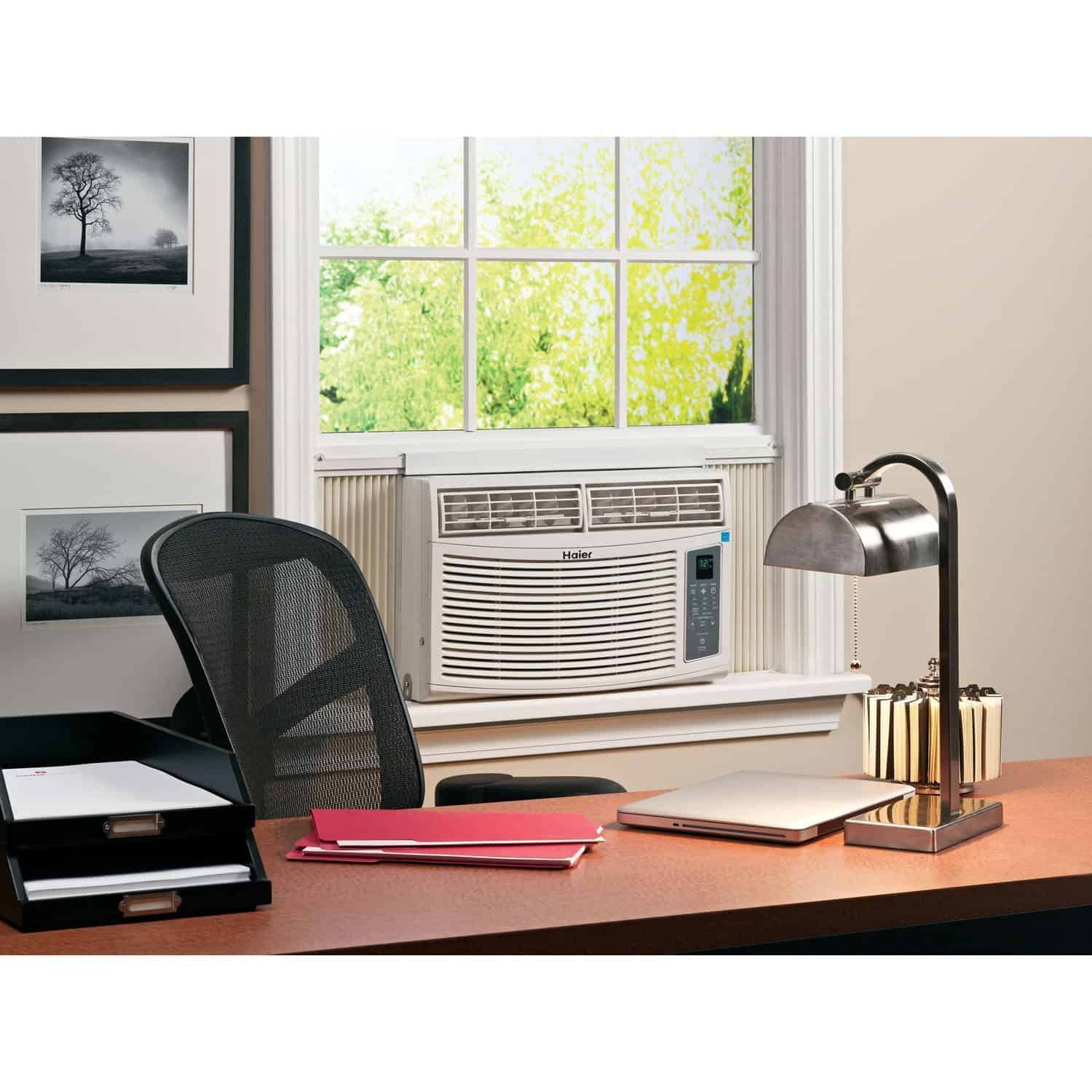If you want to use your outdoor space during hot summer days, considering the best outdoor ceiling fans is a terrific place to start. These devices can provide ample fresh air and even chase pesky flying bugs away.
If you are interested in making your patio or porch more usable, you can check out our picks for the best outdoor ceiling fans to get started. Also, we have broken down the essential factors to note if you want to make the best decision.
5 Best Outdoor Ceiling Fans
1. Minka-Aire Xtreme H2O
- DESIGN: Sleek, Contemporary Style the XTREME H2O was crafted for...
- BULB: Custom 20W LED Light Kit K9886L-ORB available for separate...
- INCLUDED: 6" Downrod, RC400 - Six-speed hand-held remote with...
- MOTOR: Conveniently quiet DC Motor
- DIMENSIONS: Measures 13.5'' from the ceiling to the bottom of the...
The Minka-Aire Xtreme H2O has eight fan blades and a 6 inch down rod with an oil-rubbed bronze finish. Also, you can purchase a 20W LED light kit separately to add to the aesthetic appeal of the outdoor ceiling fan.
The Minka-Aire Xtreme H2O ceiling fan is built for the outdoors because of its wide 65-inch fan size. Plus, the dimmable LED light is ideal for creating the right atmosphere outside.
Pros:
Cons:
2. Belmar Outdoor Ceiling Fan by Honeywell Ceiling Fans
- OUTDOOR CEILING FAN: This white ceiling fan is damp-rated and is...
- LIGHT DETAILS: Bowl light frosted closed bowl fixture with 2 E26...
- WEATHER RESISTANT BLADES: Durable, all weather resistant 52”...
- TRI-MOUNT COMPATIBLE: Dynamic hanging abilities. This fan can be...
- QUIET, REVERSIBLE MOTOR: Conveniently quiet, 3 speed - reversible...
The Belmar Outdoor Ceiling Fan from Honeywell Ceiling Fans features five weather-resistant blades with either a white or dark bronze finish. It has LED bulbs inside a light-frosted bowl that you can turn off independently. Also, the 52-inch blade span of the device is efficient with enhanced durability in tricky weather because the blades are made from ABS plastic.
The Belmar Outdoor Ceiling Fan features three-speed settings that you can access via the pull chain. Its quiet motor is reversible, and it can circulate warm air during the winter.
Pros:
Cons:
3. Hunter Fan Company Cassius Ceiling Fan
- RUSTIC CEILING FAN: The industrial Cassius fan comes with grey...
- MULTI-SPEED REVERSIBLE FAN MOTOR: Whisper Wind motor delivers...
- PULL CHAIN CONTROL: Turn the matte black ceiling fan on/off and...
- ROOM PLACEMENT: Indoor/outdoor fan is height adjustable, via the...
The Cassius Ceiling Fan from the Hunter Fan Company has a 52-inch blade span for circulating fresh air to your covered porch since it is ideal for damp locations. Its reversible blades allow you to change the airflow direction for use in your outdoor area on hot summer days and chilly winter ones.
The pull chain gives you two modes of control; switching it off or on and adjusting the fan speed. If you are worried about the durability of the Cassius Ceiling Fan, the metal blades ensure it lasts throughout the years.
Pros:
Cons:
4. Harbor Breeze Merrimack II Ceiling Fan with Light Kit
The 3-speed quiet AC motor in the Harbor Breeze Merrimack II Ceiling Fan has an impressive CFM rating of 5,188. Thus, it is an energy-efficient device with an airflow efficiency of 89.
The weatherproof blades ensure they can function well in your outdoor space. The fixtures have an antique look thanks to the java design and bronze finish to give you a stylish outdoor ceiling fan.
Pros:
Cons:
5. Prominence Home Auletta Outdoor Ceiling Fan
- OUTDOOR CEILING FAN: Elevate your space with a brand new outdoor...
- CONTEMPORARY: Who says you can’t bring your contemporary style...
- ETL DAMP RATED: This ceiling fan is damp rated, enabling it to be...
- FROSTED LED LIGHT: Power to light up an outdoor space but also...
- CONVENIENTLY QUIET: Reversible, 3 speed - powerful motor. The...
The Auletta Outdoor Ceiling Fan features a contemporary style for your patio or porch thanks to the four sleek, waterproof blades. The damp-rated device can handle most of the pressures that come with being installed in the open. Plus, it comes with a dimmable light fixture that can handle two LED bulbs.
If you are searching for a new outdoor ceiling fan to mount at an angle, the Auletta model is ideal. Plus, you can either get a white or matte black finish.
Pros:
Cons:
Factors to Consider When Buying Outdoor Ceiling Fans
a) Outdoor Ceiling Fan Style and Finish
Your outdoor ceiling fan should feel at home in any decor style. The market is saturated with different products aimed towards complementing a specific home design. The following are some of the most popular styles of outdoor ceiling fans.
- Antique ceiling fan designs are well suited for a retro-style home where vintage and traditional are the proper adjectives. Typically, these fans have intricate ornamentation and carpentry on the blade brackets and motor housing. Some antique outdoor ceiling fans may have a light kit and feature solid wood or an oil-rubbed bronze finish to add to the vintage appeal.
- Contemporary ceiling fans complement the modern style and transitional decor designs. These products feature an industrial style coupled with minimalism to produce clean and smooth lines on metallic finishes. It is the go-to outdoor ceiling fan if your patio or porch has stainless steel, nickel or chrome furniture with geometric accents and natural textiles.
- Tropical-style outdoor ceiling fans bring an island or coastal nuance to your home. These outdoor fans have bamboo, rattan and natural palm leaf blades with wood as a finish, in most cases. The bright colors, natural patterns, rattan furniture, handcrafted ornaments, flowers and plants on your patio will go well with a tropical style outdoor ceiling fan.
- Rustic outdoor ceiling fans are a terrific choice if your porch has western, mission or country decor. You can go for a walnut finish or weathered wood to complement the numerous wooden furniture and carved ornaments.
b) Size
Cubic Feet per Minute (CFM) is a measurement of how much air your fan can move through the room while on the highest speed settings in a single minute. Thus, a larger space means you need a fan with a higher CFM for efficient cooling.
Sizing indoor fans is quite straightforward. For starters, you need to find the room's square footage by multiplying the length and width. Secondly, you need to get the height of the room. Finally, the larger the room, the wider the fan blades and the higher the CFM rating required.
On the other hand, outdoor ceiling fans aim to enhance your open space experience by promoting cool air circulation while avoiding mosquitoes and flies. A CFM rating of 1,000 to 3,000 is ideal for a small patio under 144 square feet. If you have a large gazebo or 225 to 400 square feet, a CFM rating of 2,300 to 6,500 will be sufficient to cool the space.
c) Where to Mount the Outdoor Ceiling Fan
Indoor fans and outdoor ones are built differently because each of them is exposed to particular weather elements. These operating conditions have a bearing on the effectiveness and durability of the fan. Therefore, you should strive to find a specifically suited product for the location you intend to install.
- A dry-rated ceiling fan features a design meant for covered decks or indoor locations with little humidity or moisture that would compromise their functioning. Their finishes include wooden fan blades. You should go for these outdoor ceiling fans if you have an entirely covered porch.
- Damp-rated fans are designed to withstand both moisture and humidity, but they should not be directly exposed to water. Partly covered patios that require an outdoor fan should have the damp rating for extended durability.
- A wet-rated ceiling fan should be at the top of your buying list if you do not have a covered patio. The wet location rating means these products can take rain, ocean sprays, water and snow. The motor housing in wet-rated fans is often waterproof, while the fan blades are all-weather champions to give you optimal airflow as you chill in your exposed patio.
Once you have figured out where to mount your outdoor ceiling fan, the next hurdle involves determining how you will mount it. There are three options for installing these fixtures.
- Flush mount comes in handy when your outdoor ceiling is less than 8 feet in height. You need to find a fan that has a low-profile design to allow for optimal airflow where the recommended height from the floor is about 7 feet.
- Standard mounting is ideal if the ceiling is between 8 and 10 feet in height. Typically, a down rod will hold the ceiling fan in place to put it at the advisable distance from the floor.
- An extended rod mount ensures that homeowners with extensive exterior spaces can still buy a ceiling fan for outdoor use.
d) Airflow Efficiency
Airflow, measured in CFM, is the quantity of air that a ceiling fan can deliver when running at its highest speed settings. Typically, a ceiling fan is referred to as 'efficient' if it achieves a minimum of 75 CFM.
Airflow efficiency is the specific wattage that the ceiling fan uses to achieve the bare minimum. Therefore, try to find a product that can deliver a high CFM while consuming little power. Plus, the ceiling fan should have a high airflow for better functioning outdoors to keep the bugs away.
Thankfully, you do not need to do some tricky calculations when shopping for the best ceiling fan. Manufacturers are forthcoming with this information, and you will find the details alongside the online listings. Still, you can look out for the type of motor that ceiling fans use.
e) Motors and Optional Light Kits
AC motors draw power directly from the power source while DC motors route power through a transformer for conversion. Ceiling fans that use a DC motor cannot be connected to a DC power source. Still, they offer many advantages over their AC counterparts.
For starters, a DC motor consumes about 70% less energy than an AC one while operating silently. A ceiling fan using a DC motor gives you more speed options, the ability to switch rotational direction, swift starting, stopping and changing the fan's speed. Additionally, the small motor allows manufacturers to come up with a compact fan.
Buying an outdoor ceiling fan with a light kit boils down to either aesthetics or function since there would be plenty of natural light, or you might have fixtures that get the job done. Still, if you're interested in adding to the ambiance, then you can choose from the following options.
- An LED light kit offers the most durable fixture while using the least energy to power. Also, the LED light emitted is cool.
- If you want warm light, halogen light sources are ideal. They are 15% more efficient than incandescent ones but last about 1,500 hours.
- Fluorescent lights are 75% more efficient than incandescent fixtures but can emit either cool or warm lighting. You can expect this kind of light kit to last about 10,000 hours.
f) Controls
- Outdoor fans that use a remote control device can allow you to alter the speed from a range of about 30 to 50 feet. Consequently, such products are convenient if you have a high ceiling or you have placed your fan in a place that is difficult to reach.
- A ceiling fan with a wall control option is ideal if you want to control airflow in your outdoor space from a specific point. Most people mount these stationary controls next to other switches on the wall. Plus, you can place it away from kids who might want to play with it.
- Pull chains offer fundamental controls in flush-mounted ceiling fans. Also, they are most suitable when the ceiling is low and there is little traffic underneath the fan.
Frequently Asked Questions (FAQs) on Outdoor Ceiling Fans
1. Which is the best outdoor ceiling fan?
A wet-rated outdoor ceiling fan can provide you with the best performance for exterior spaces. Still, the best ceiling fans for patios, porches and gazebos have a damp rating to ensure they can withstand humid conditions.
2. Which outdoor ceiling fans move the most air?
The perfect fan for the outdoors should have a wide blade span or impressive airflow efficiency that meets the minimum requirement explained above. Typically, most ceiling fans utilize different technologies like a hugger-style fan to get the most out of the blades. However, you should check on the efficiency ratings before you buy.





















